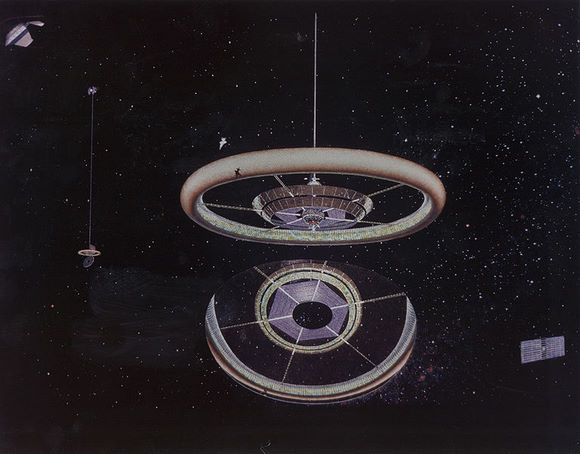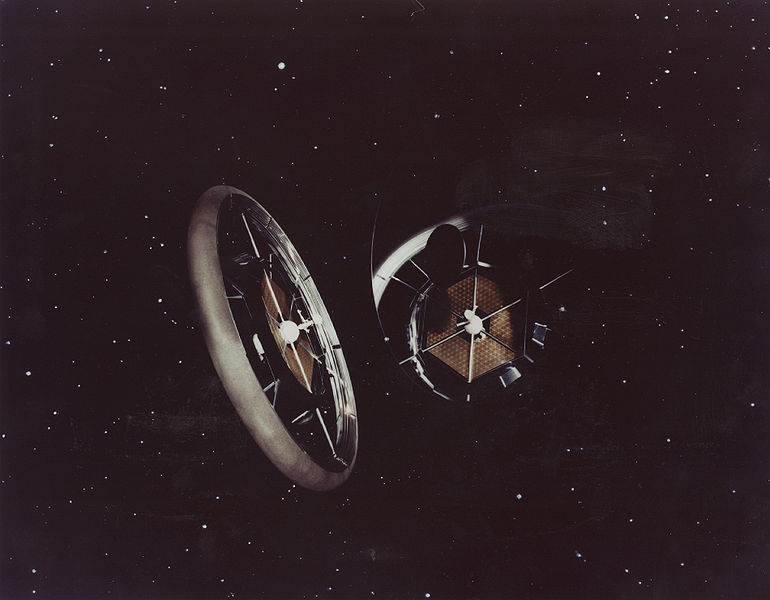The O'Neill cylinder is one of those beautiful retro design concepts for mankind's exploration into space that was concieved in the sixties when the space race was making these kinds of thing look inevitable. The basic concept it to construct a cylinder several miles long at a lagrange point (a point in space where the moon and earth's gravitational fields effectively cancel each other out, providing a stationary position in space). The idea is that these massive structures are rotated around their central axis and the centrifugal force pins everything to the exterior walls, simulating gravity.
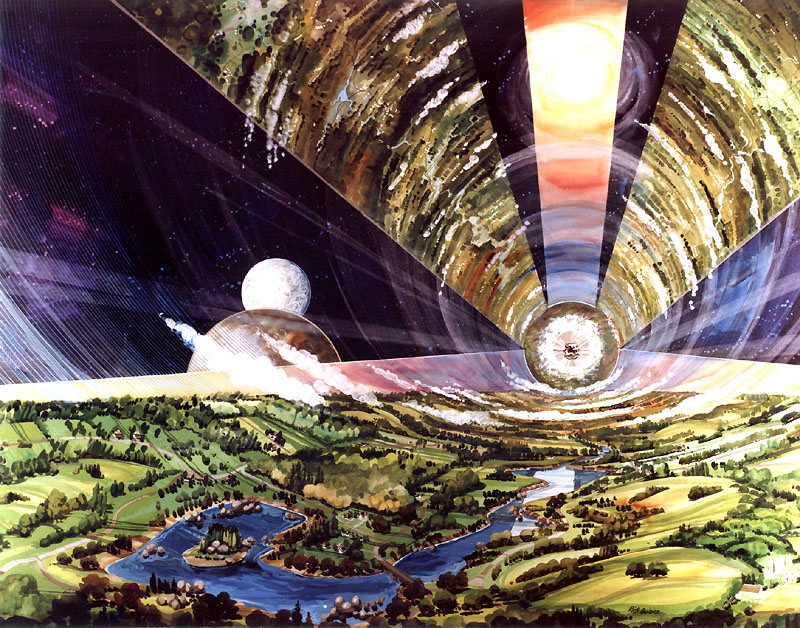
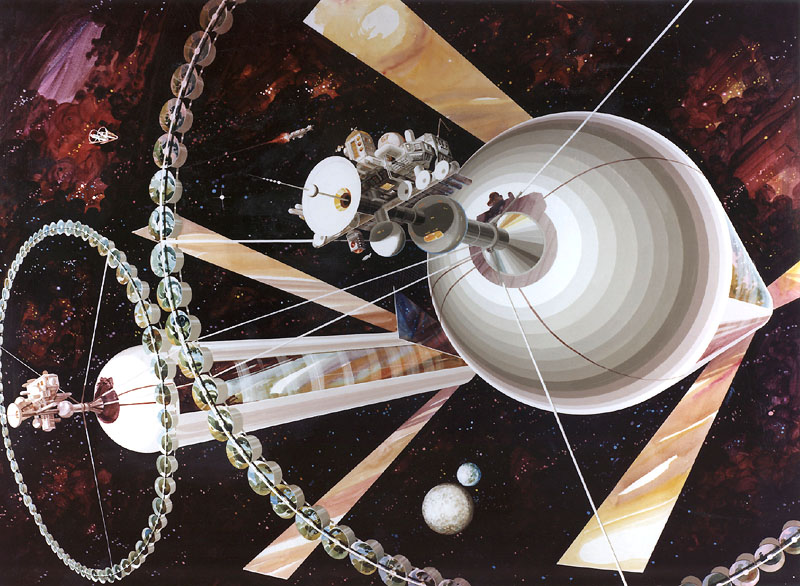
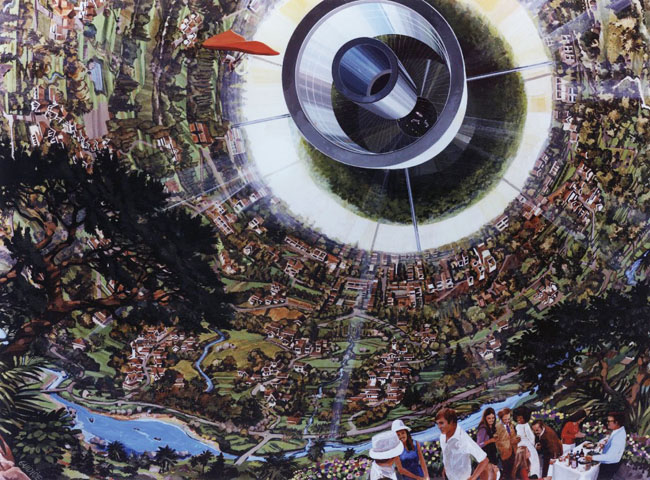
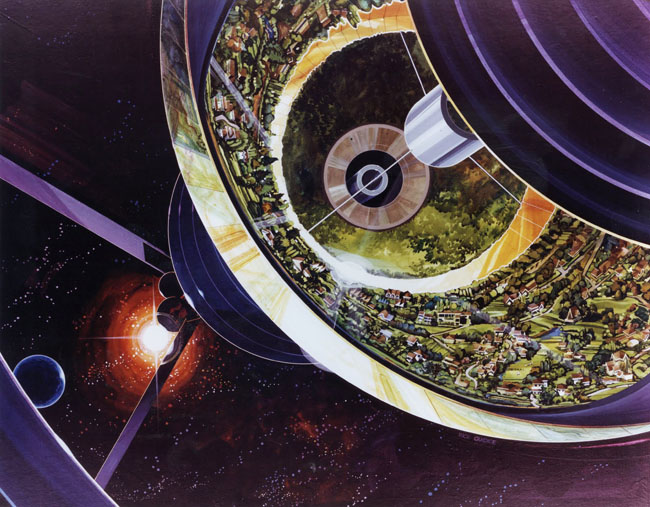
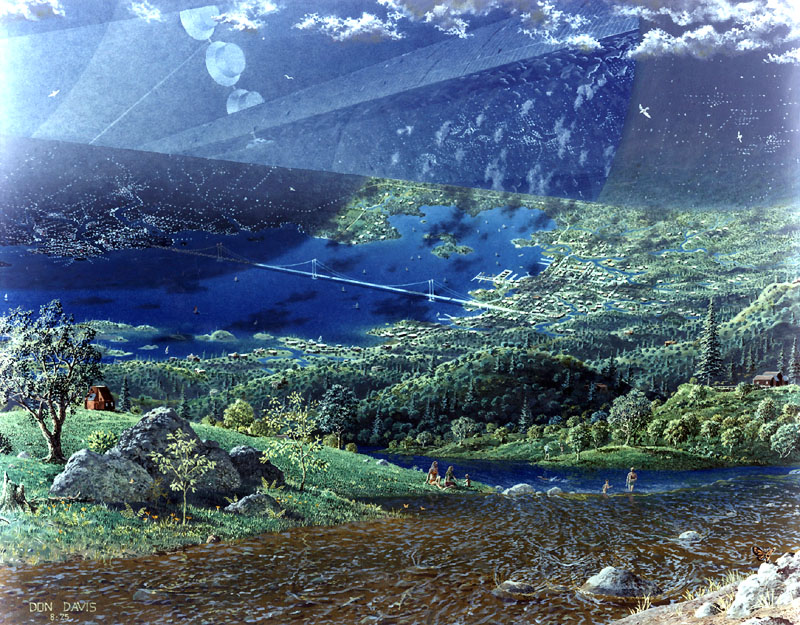
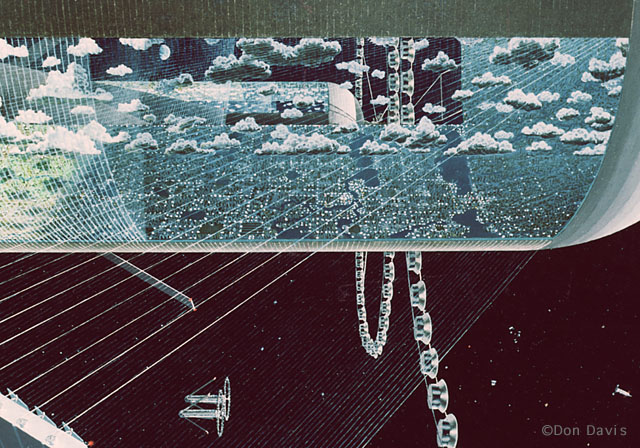
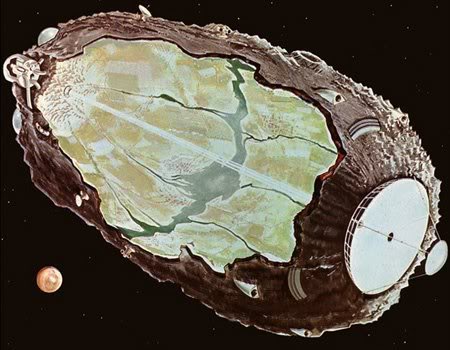 The
O'Neill Cylinder has a cousin which it is often mistaken for; the
Stanford Torus. This is actually a large circular tube which rotates
around it's own wheel-like centre to create an artificial gravity effect
on the outer wall only which reduces the available surface area for
habitation but has the bonus effect of giving the inhabitants a sky.
The
O'Neill Cylinder has a cousin which it is often mistaken for; the
Stanford Torus. This is actually a large circular tube which rotates
around it's own wheel-like centre to create an artificial gravity effect
on the outer wall only which reduces the available surface area for
habitation but has the bonus effect of giving the inhabitants a sky.
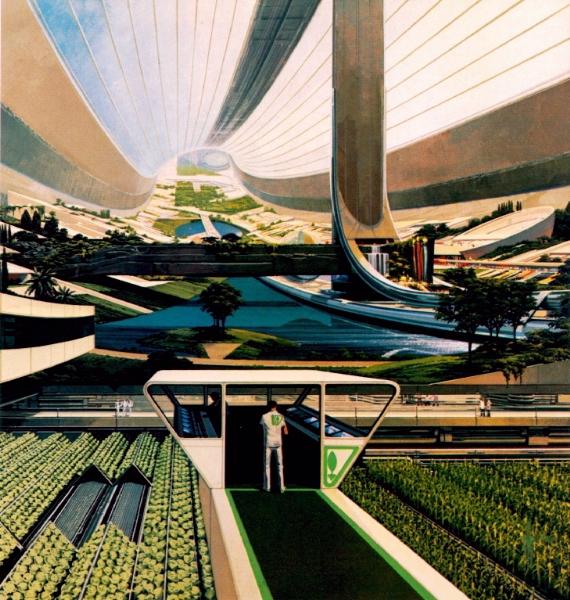
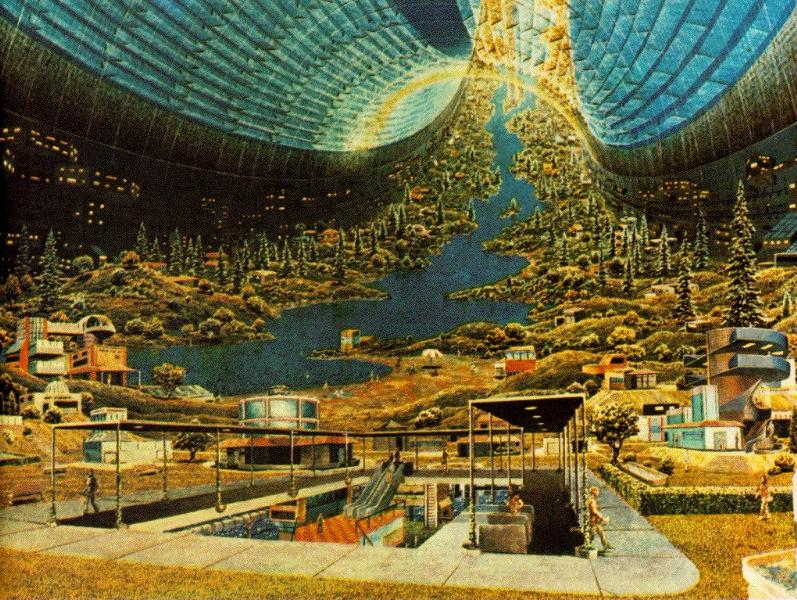
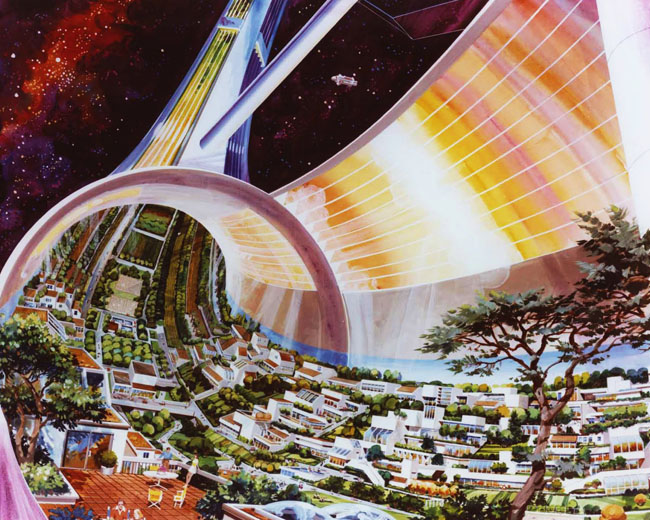
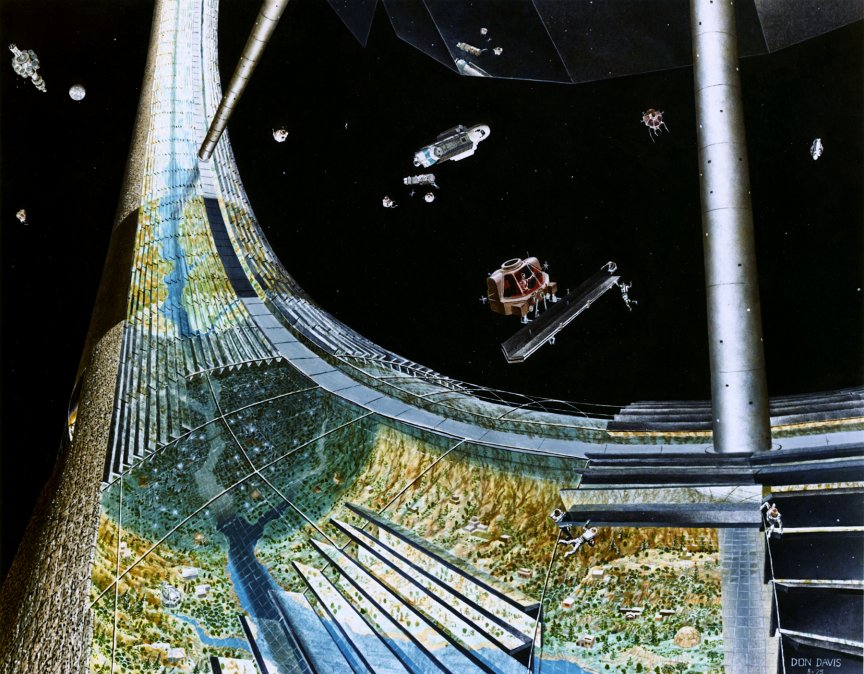
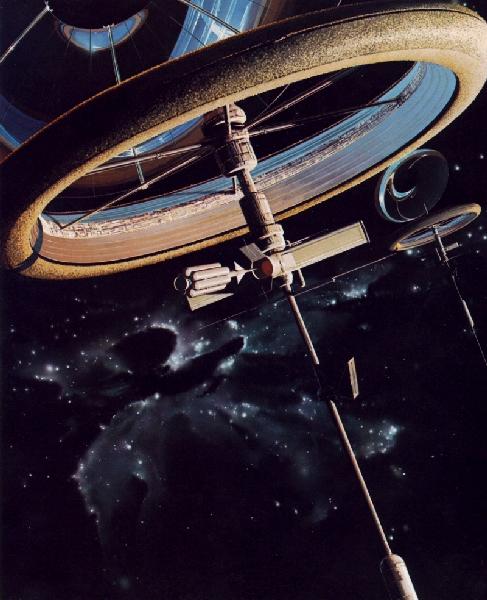 The
Stanford Torus was intended to have an enormous mirror located just
outside the station which would be used to reflect light into the
habitat on a day/night cycle. Part of me wants to point out how insane
these concepts are but to be honest they aren't - they're beautifuly
elegant. They only seem insane because of the scale of the engineering
effort involved and the assumed costs. Imagine how cool it would be if
we actually managed to build one though.
The
Stanford Torus was intended to have an enormous mirror located just
outside the station which would be used to reflect light into the
habitat on a day/night cycle. Part of me wants to point out how insane
these concepts are but to be honest they aren't - they're beautifuly
elegant. They only seem insane because of the scale of the engineering
effort involved and the assumed costs. Imagine how cool it would be if
we actually managed to build one though.
